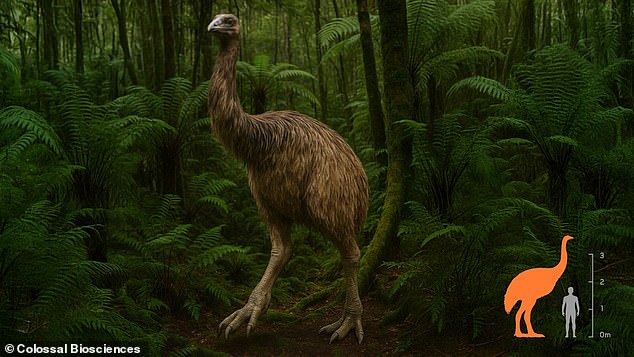
De-Extinction Company Targets Giant 3.6m-Tall, 230kg Moa After Woolly Mammoth Revival Efforts
Reviving the Moa: Colossal Biosciences’ Next De-Extinction Project
(Images: 1. Illustration of the towering South Island Giant Moa; 2. 1903 photo of Māori students with a moa reconstruction; 3. Peter Jackson and Ben Lamm holding moa bones; 4. Emu, the moa’s closest living relative)
Colossal Biosciences, the company aiming to revive the woolly mammoth, is now targeting the moa—a group of giant birds that once roamed New Zealand. These flightless birds, including nine species, were driven to extinction by Polynesian settlers (later the Māori) within 200 years of human arrival. The largest, the South Island Giant Moa, stood 11.8 feet tall and weighed over 500 lbs.
The Plan to ‘De-Extinct’ the Moa
Backed by $15 million from Lord of the Rings director Sir Peter Jackson—a moa bone collector—Colossal will use DNA from ancient moa remains to engineer modern birds resembling their extinct ancestors. Partnering with the Māori-led Ngāi Tahu Research Centre, the team aims to sequence moa genomes by 2026.
Key Steps:
- Extract DNA from moa bones in New Zealand caves.
- Compare genes with the emu and tinamou (the moa’s closest relatives).
- Use CRISPR to edit emu stem cells, introducing moa traits.
- Implant edited embryos into surrogate emu eggs.
(Image: Scientists extracting DNA from moa bones in a cave)
Challenges Ahead
Bird de-extinction is complex. Creating viable bird stem cells and managing egg-based embryo development are major hurdles. Colossal recently used similar methods to transform grey wolves into dire wolf-like creatures and bred mice with mammoth-like fur. However, critics argue resources should protect endangered species rather than resurrect extinct ones.
Ecological and Cultural Impact
The moa’s extinction around 1445 AD triggered the demise of its predator, the Haast’s eagle, and disrupted New Zealand’s ecosystems. Colossal claims reintroducing moa could restore balance, as they were vital seed dispersers. For the Māori, this project holds ancestral significance; moa provided food, materials, and symbolize strength in their culture.
(Image: Dire wolf-like puppies created via gene editing)
Ethical Debates
Critics like ecologist Stuart Pirmm question reintroducing species absent for 600 years, warning of ecological risks. Ngāi Tahu researcher Kyle Davis, however, views the project as reconciling scientific innovation with Indigenous knowledge.
Colossal remains optimistic, aiming to blend cutting-edge genetics with ecological restoration. Whether the moa returns to New Zealand’s forests, its revival sparks both hope and controversy in the quest to reverse humanity’s ancient impacts.
(Word count: ~600)


